
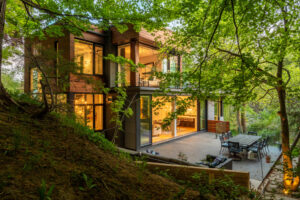
How a sustainable home takes advantage of its exceptional ravine site, exemplifying a light-touch approach, dubbed ”viable sustainability” to give this home another 100-year lease on life.
Dewson Architects present Sylvan Living, a mid-century split-level home in North York with a new and sustainable lease on life. Building anything in a city like Toronto is well-known to be a challenge. The cost of land, the regulatory environment, and inflated construction budgets make delivering a quality product on time, and on budget, a tall order.

Throw a whole list of regulatory requirements into the mix to appease the client’s desire to build a home that is both gentle on the environment and reflective of their taste and personalities. All of that comes together on a very unique site abutting protected parkland, providing a recipe for a complex, challenging project that would make lesser architects run for the ravines.
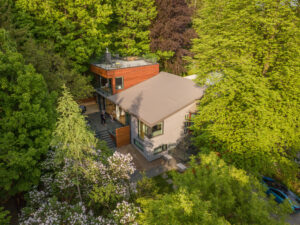
But not Dewson Architects, a firm very much used to complex, challenging projects with numerous stakeholders, with equally numerous regulatory requirements. After renovating multiple centenarian, heritage-protected homes in Rosedale, and building a new house on a 100-year floodplain in Etobicoke, designed to be both viably sustainable and to last for generations, they were up to the challenge of renovating this mid-century, homely split-level in North York, near Bathurst and Sheppard.
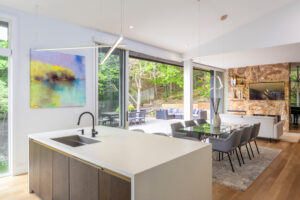
The architects’ focus on this project was fourfold:

Design-wise, the architects functionally flipped the program to de-emphasize the original design’s orientation and connection to the street. Instead, they opened the living spaces to the side yard, giving the interiors an unparalleled view and functional connection to the ravine landscape beyond the property lines.
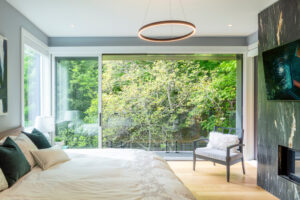
All principal living spaces were relocated on the main floor to take advantage of this connection to nature, while the master suite was designed as a small second-floor addition, giving the impression of living in a luxurious tree house, thanks to large floor-to-ceiling sliding doors blurring the indoor-outdoor boundary. Lastly, the architects fought for permission to add a rooftop terrace that expands the house’s space outside in the summer, while taking in breathtaking views onto the surrounding landscape.
From a regulatory standpoint, the design was constrained by the requirement to build within the existing home’s footprint, and to reuse its pre-existing foundation. That required extensive underpinning, shoring, and slope stability work in order to ensure that the renovated home would last for another 100 years, while keeping up with the code and zoning requirements, thus maximizing the healthy, yet limited budget.
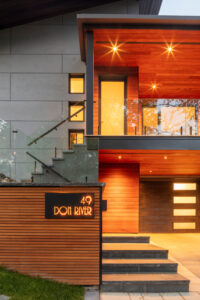
The design team managed to fit a number of sustainable features, such as:
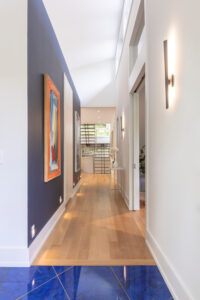
Dewson’s approach to architecture is what they’ve dubbed “viable sustainability”: looking beyond the strictly environmental performance of a building to consider all aspects of its impact, such as cultural (in the case of rejuvenating centenarian homes), and financial (building within the client’s budget constraints).
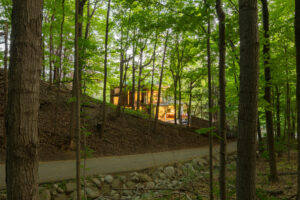
As stated by Bill Dewson: “A truly sustainable project takes into account the environment, the stakeholder’s needs and wants, and the financial constraints. We get things built by finding the sweet spot in all three aspets.
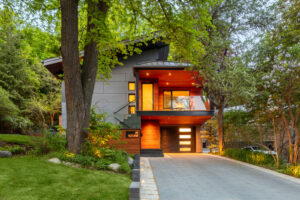
Their approach is akin to that of a chef: carefully measuring every input to make sure that the output is optimal and corresponds to their client’s specifications, while adding the “je-ne-sais-quoi” that makes each project special.